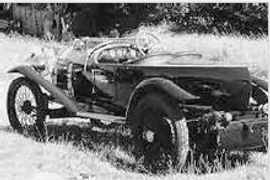BUGATTI Type 23 Models/Series Timeline, Specifications & Photos
First production year: 1913
Engines: Gasoline
Body style: Convertible (spider/spyder, cabrio/cabriolet, drop/open/soft top)
The Bugatti Type 23 was a two-part story that started in 1913 but ended more than a decade later, after WWI, and it came with a significant innovation for the car industry.
Ettore Bugatti was keen to launch new models and sell them for big money. He developed the chassis for the Type 13 as a race-car with a short wheelbase. While the car performed well on race tracks, it wasn't that good as a road-going version since it was very short. It extended the wheelbase and made it Type 15. It was better, but not by much. Then, the carmaker made the Type 17 with a 2,550 mm (10.4 in) wheelbase, which proved to be good in all areas. It provided enough comfort and could keep a steady high speed (for those times) on bumpy roads. But the real deal was the Type 23.
The car shared the chassis with the Type 17 and featured the oval radiator at the front from a Type 22. It was still a two-seat vehicle, but the carmaker installed a boat-tail in the back, forming an aerodynamic shape for the car. Ettore dropped a Type 13 powerplant and drivetrain and tested the car, but it was too late. The war started before he could complete a good engine for it. During the war, Ettore took two completed Type 13 cars in Brescia and buried the rest of the chassis and vehicles in Molsheim, near his factory. After the war, he unearthed them.
In 1920, Type 23 lived its second life. It received the 1.4-liter, 16-valve engine. That was an essential improvement for the car that became faster than its lighter predecessor. All Type 23s with 16-valve engines were dubbed 23 Brescia. The engine with four valves per cylinder engine was born.
